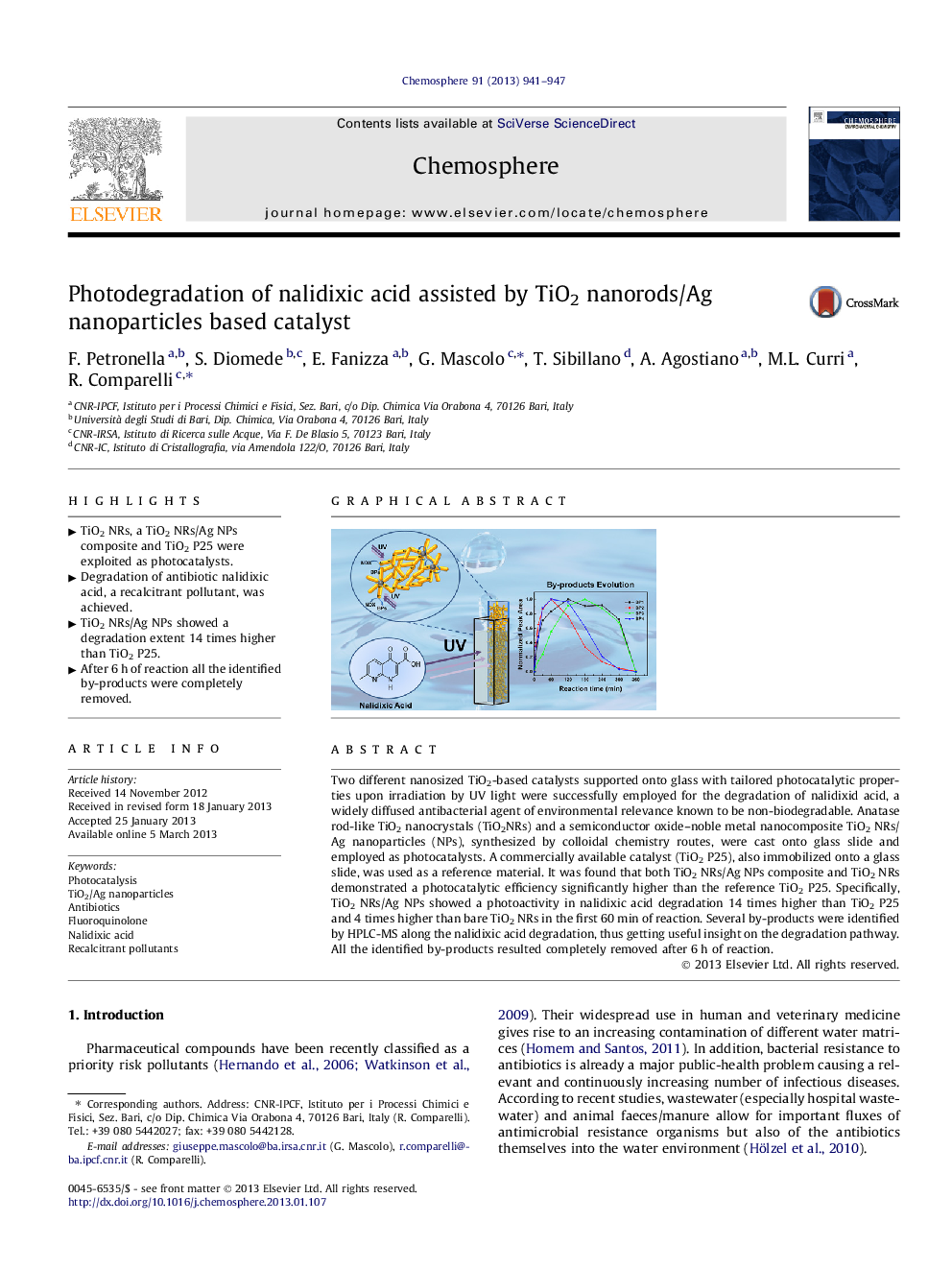| Article ID | Journal | Published Year | Pages | File Type |
|---|---|---|---|---|
| 4409349 | Chemosphere | 2013 | 7 Pages |
Two different nanosized TiO2-based catalysts supported onto glass with tailored photocatalytic properties upon irradiation by UV light were successfully employed for the degradation of nalidixid acid, a widely diffused antibacterial agent of environmental relevance known to be non-biodegradable. Anatase rod-like TiO2 nanocrystals (TiO2NRs) and a semiconductor oxide–noble metal nanocomposite TiO2 NRs/Ag nanoparticles (NPs), synthesized by colloidal chemistry routes, were cast onto glass slide and employed as photocatalysts. A commercially available catalyst (TiO2 P25), also immobilized onto a glass slide, was used as a reference material. It was found that both TiO2 NRs/Ag NPs composite and TiO2 NRs demonstrated a photocatalytic efficiency significantly higher than the reference TiO2 P25. Specifically, TiO2 NRs/Ag NPs showed a photoactivity in nalidixic acid degradation 14 times higher than TiO2 P25 and 4 times higher than bare TiO2 NRs in the first 60 min of reaction. Several by-products were identified by HPLC-MS along the nalidixic acid degradation, thus getting useful insight on the degradation pathway. All the identified by-products resulted completely removed after 6 h of reaction.
Graphical abstractFigure optionsDownload full-size imageDownload as PowerPoint slideHighlights► TiO2 NRs, a TiO2 NRs/Ag NPs composite and TiO2 P25 were exploited as photocatalysts. ► Degradation of antibiotic nalidixic acid, a recalcitrant pollutant, was achieved. ► TiO2 NRs/Ag NPs showed a degradation extent 14 times higher than TiO2 P25. ► After 6 h of reaction all the identified by-products were completely removed.
